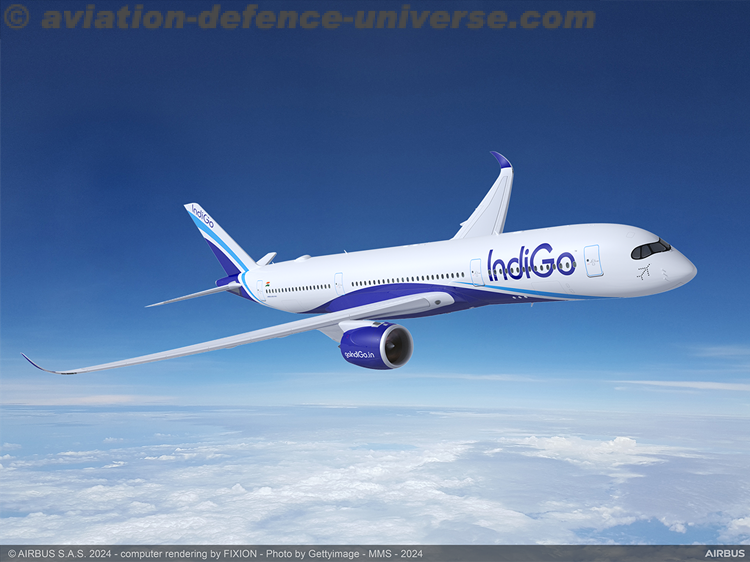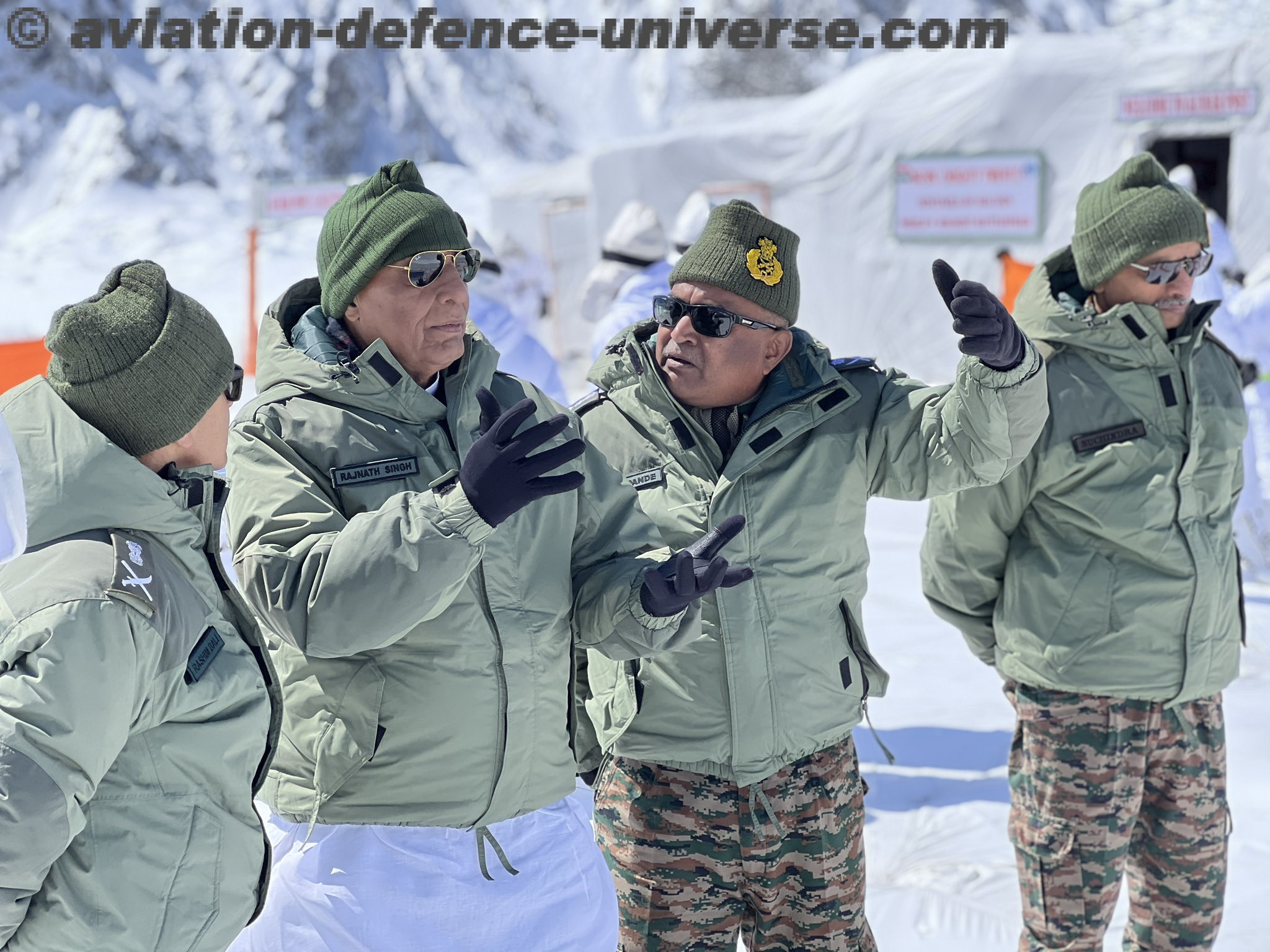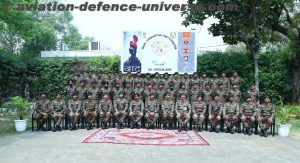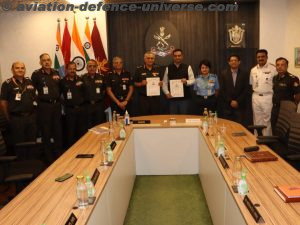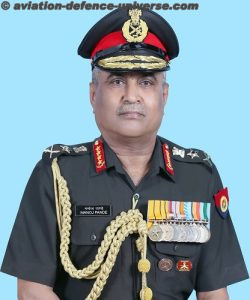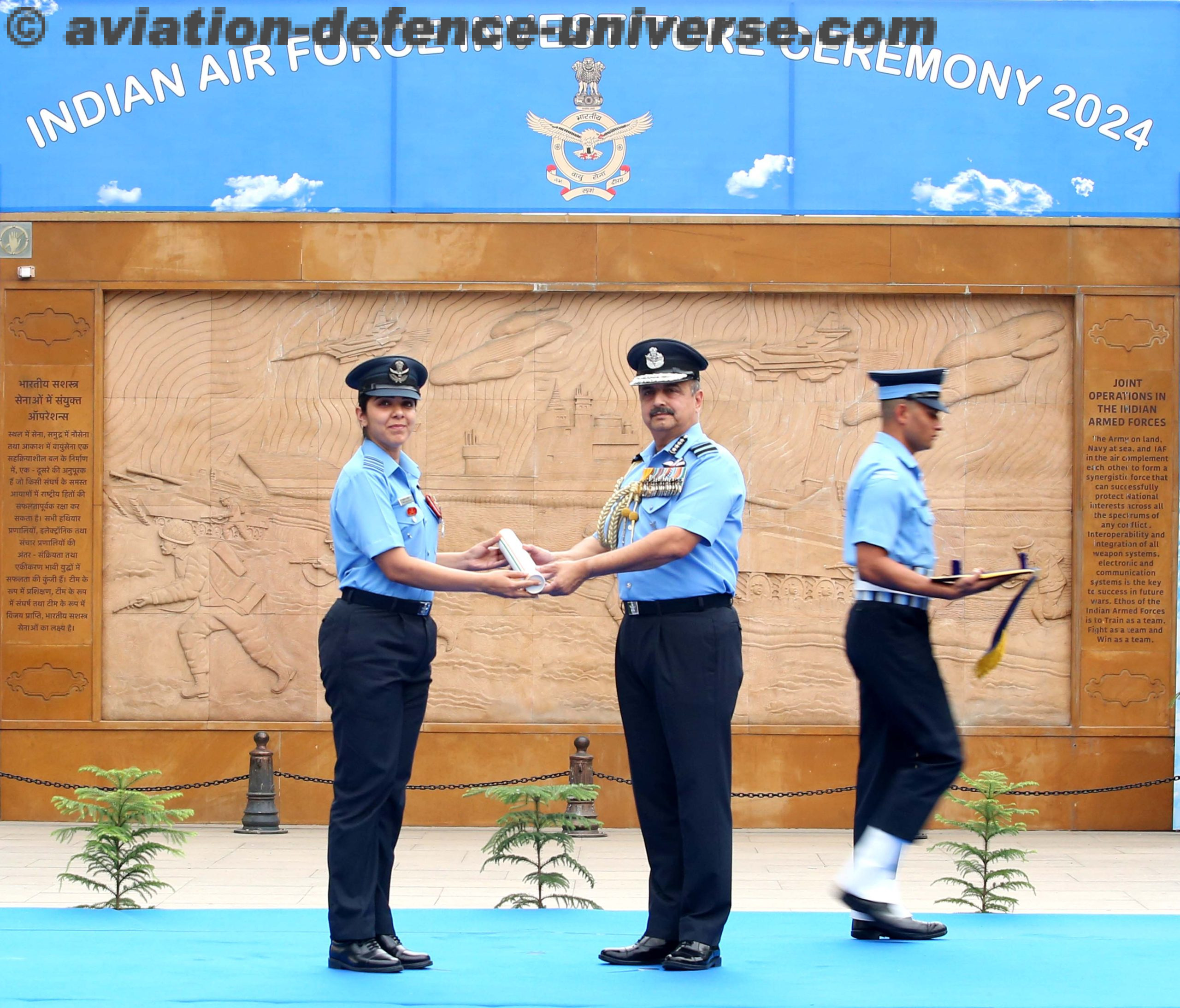- General Manoj Pande delivered a Keynote Address at IIM Nagpur
- Read the complete text here
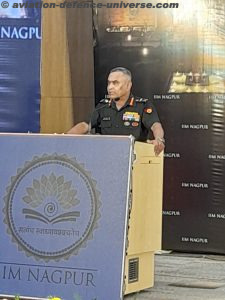 Nagpur. 18 December 2023. “The prosperity and ascent of any country in the comity of nations, is intricately linked to its National Security paradigm. In simple terms, National Security is the ability of a Nation, to protect and preserve its independence, integrity and sovereignty against external and internal threats, and the promotion of its political, economic and social growth. Its conceptualization is beyond the realm of any single discipline, for it covers the very foundation of a nation State, on the one hand, and the survival, welfare and prosperity of its citizens, on the other.
Nagpur. 18 December 2023. “The prosperity and ascent of any country in the comity of nations, is intricately linked to its National Security paradigm. In simple terms, National Security is the ability of a Nation, to protect and preserve its independence, integrity and sovereignty against external and internal threats, and the promotion of its political, economic and social growth. Its conceptualization is beyond the realm of any single discipline, for it covers the very foundation of a nation State, on the one hand, and the survival, welfare and prosperity of its citizens, on the other.
The constituent dimensions of National Security include Economic Security, Energy Security, Food Security, Health Security, Environmental Security, amongst others.
The overall ‘rise’ of a nation can be said to occur, when there is a significant and continuous increase in its Comprehensive National Power. The CNP of a nation is a function of many factors, such as – strategic culture, economic strength, military power, foreign policy clout, diplomatic influence, internal cohesion, capability of human capital, advancement in science and technology, knowledge and information base, advantages of geography and natural resources, attractiveness of soft power and the firmness of its national will.
‘Economic power’, no doubt is the fountainhead that drives the progression of these factors, yet it is the ‘military strength’ that lends a Nation, the ability to effect the outcomes, necessary, to protect and further its multifarious interests.
The economic power alone may be insufficient to ‘rise’ in the concert of nation States. ‘Security’ and ‘Economic Progress’ share a symbiotic relationship. A secure environment provides the stability necessary for domestic and foreign investments, fostering economic growth. Economic prosperity in turn, enables allocation of resources, reinforcing a nation’s security capabilities. A right balance between the two is essential, for an overly militarized approach might impede economic development, while neglecting security can jeopardize economic stability.
Our nation envisions the resolve to emerge as a developed nation, when we celebrate our centenary milestone. The Indian Armed Forces remain fully aligned to the national vision and objectives. The foremost implication therefore, is to ensure that the nation’s security is not impacted in any way, so that nation’s progress continues unabated. In order to fulfil the pivotal role, as guardians of the nation’s path to progress, there are imperatives that the Indian Army, is alive to and remains committed to.
Geo-Strat Landscape
The Armed Forces need to remain cognizant of the contours of the current and evolving geo-political landscape, which is characterized by Change, unfolding at ‘unprecedented scale and speed’. Economic interests, concerns and aspirations continue to hold primacy in the strategic calculus of States. These are in fact driving geo-political shifts, the manifestations of which are visible as power-plays, in the spectrum of Cooperation – Competition – Containment – Confrontation. Strategic linkages amongst nations are being redrawn and ‘Interest based alliances’ are taking shape.
The centrality of National Interests and the growing salience of ‘National Security’, in the international system, is increasingly visible. Today, nations are willing to resort to the use of Hard Power, to secure their interests. We are witnessing this ‘return to conflict’ for achieving political and military objectives, in the ongoing conflicts.
Concurrently, the Character of War has also undergone a profound change. Disruptive technologies are blunting conventional combat force ratios. Multi domain Operations to include Space, Cyber, Electromagnetic Spectrum and Information, are today inescapable realities. The growing centrality of Cyber domain in critical national infrastructure and systems, has resulted in it emerging, as a new battleground of Digital Confrontation. The conventional instruments of war have also undergone notable technological progression. Non State Actors are increasingly gaining access to modern technologies of military use and employing it for an asymmetric leverage in conflict. Cumulatively, the battle space has become more complex, contested and lethal.
Technology has become the new strategic arena of Competition. It is being leveraged for weaponisation of a multitude of domains – ranging from Information to Supply Chains. Technology, Economy and Security in fact form the strategic triad, in contemporary context.
Emerging and disruptive technologies are no longer Superpower centric. These are available to many nations and even Non State actors. With Non State actors not being restricted by normative behaviour, the threshold of initiating conflict is low. We are also witness to the Low Tech versus High Tech contestations, amidst an increased propensity in risk taking behaviour.
Grey Zone aggression is becoming an increasingly preferred strategy of conflict prosecution. This is because it aims to achieve strategic objectives through indirect, ambiguous and deniable means, while keeping the contestation below the threshold of traditional military conflict. Apart from the military domain, its signatures can be seen in disinformation campaigns, cyberattacks, proxy war, political coercion, economic pressure, weaponisation of multiple domains such as technology, financial mechanisms, food, migrants, and even critical medicines or vaccines….to name a few.
The occurrence of recent conflicts, leads us to question the relevance of Deterrence, in the contemporary context? Is the traditional paradigm of Deterrence failing? Has ‘technology’ emerged as the new domain of Deterrence? These are some other issues that merit debate.
Expect the Unexpected – is a maxim, that we need to be alive to. Black Swan events can add turbulence in the dynamic global security canvas. The outcome of the ongoing Russia-Ukraine and Israel-Hamas conflicts, will itself redefine relations, linkages and hierarchy amongst nations, giving a new shade to world politics in the coming decades.
In the Indo-Pacific, there is an increasing contestation in traditional and non-traditional domains. The key markers include assertion of sharp and aggressive power with a shift in the Centre of Gravity of economic heft. Concurrently, a confluence of interests, capacities and capabilities are bringing countries together.
South Asia is marked by unresolved border disputes, both territorial and maritime, illegal cross border migration, trans national crimes, terrorism and non-traditional threats such as illegal and unregulated fishing, piracy and increasing religious fundamentalism. These manifestations, coupled with regional vulnerabilities to climate change induced disasters, have kept the region in a flux.
All these developments are profoundly impacting the security domain and transforming the way nations interact, compete & pursue their interests.
The Indian Army remains seized with the military implications of these dynamics. Proactive measures, capability enhancement, adaptability and a holistic approach to all aspects that impact or augment security, stands mandated.
Protecting National Interests
Our Economic growth is on a firm footing. Unlike many nations, we were able to brave the economic downturns of the Pandemic and Russia-Ukraine conflict, based on a agile, resilient and consumption driven economy. An aspirational demographic dividend, cost advantage, accruing from the vast human capital, policy reforms, skilling initiatives, infrastructure investment, digital potential, frontline entrepreneurship, the promise of being a reliable supply chain stakeholder and our commitment to sustainable development, have made us today, the fifth largest economy in the world, and the fastest growing major economy.
Our Foreign policy and Diplomatic pursuits are playing a vital role in securing India’s interests. Our stance on the Russia-Ukraine conflict, is a fine example, where we stood steadfast and clear, towards addressing legitimate concerns based on National Interest. The country has taken lead in championing initiatives for finding solutions to Global problems, in ventures such as – International Solar Alliance, Global Bio Fuel Alliance, Coalition for Disaster Resilient Infrastructure and Vaccine Maitri. Consequently, today India has a voice on the world stage that is distinct, rooted in Indian ethos and effective in articulating the concerns of the Global South. The successful conduct of the G20 meet, demonstrated India’s ability to bridge divides and achieve consensus, on some very knotty issues.
On the Technological front, we were at the receiving end of Technology denial regimes for many years. Despite that, propelled by our beliefs, ideas, innovation and enabling policies, we are witness to a new revolution – certain milestones of which include, technology led Startup Innovation Eco-system, a robust Digital Public Infrastructure, setting up Centres of Excellence to capture emerging technologies, Semiconductor Mission, advancement in Space technology, missile program, weapon platforms and increased focus on R&D.
India’s rise in a ‘non-threatening’ manner and as a responsible power, stands acknowledged by the world community. India’s growth in stature, brings with it recognition, additional responsibilities, opportunities as well as challenges. As the nation’s influence expands, some will question our rise, some will contest it while some will attempt to compete. As a nation, we need to ensure that our National Interests remain paramount. That mandates us to be a strong nation, to be able to defend our interests in the expanding strategic horizons. Our progression towards being a ‘strong nation’ militarily, needs to be achieved by enhancing our defence capability through self-reliance.
A fine example of this need can be seen in the Indo-Pacific region, which has emerged as the pivotal theatre, in the contemporary geo-strategic canvas. India’s strategic location here, propels it to be a key player in this region’s discourse.
Our stakeholdership in the region, finds reflection in our policy initiatives and participation in various regional strategic frameworks, be it BIMSTEC, IORA, India-ASEAN engagements, Indo-Pacific Oceans’ Initiative, SAGAR, QUAD and the Indo-Pacific Economic Framework, to name a few.
We need to ensure the right ‘Strategic Balance’, and achieving it, may not preclude ‘coalitions, based on interests’.
Threats and Challenges
Our legacy challenges of unsettled borders will continue to engage us.
The new conflict-spectrum threats, have concurrently appeared on the horizon. Increasing weaponisation of Space, poses significant challenges to the security of Space assets. The Cyber domain has its own myriad manifestations. CERT-In Annual Report of 2022, records almost 14 lakh cases of website intrusion, malware propagation, malicious code, phishing, distributed denial of service attacks, ransomware attacks and data breach attempts in one year. Technological advances in the Electromagnetic Spectrum lend avenues for impacting military operations, intelligence gathering and civilian infrastructure reliant on electromagnetic waves. The Information domain too is becoming increasingly complex with ‘narrative shaping’ and ‘cognitive dominance’ as an integral part of conflict prosecution.
Grey Zone pursuits by our adversaries also mandate our attention and response. We already are witness to manifestations of disinformation campaigns, cyberattacks, selective historical referencing, cartographic manipulation, leveraging politico-economic heft and increasing military footprints in our neighbourhood, and fanning religious radicalization as part of proxy war pursuits.
As guardians of the nation’s security, we are constantly seized with the contemporary threats. Concurrently, the ability to correctly assess future threats, remains pivotal to our strategic planning and preparedness.
Synergy and Outreach with Other Government Agencies
The importance of cross-functional synergy and outreach to other Government Ministries, Departments and Agencies, needs little emphasis, for its implications transcend across multiple domains. The Indian Army forms one component of the larger Defence and Security Eco System, and we are alive to the imperatives of achieving convergence amongst all stakeholders, to improve collective outcomes.
Today, the Indian Army is leveraging linkages with Government Ministries and Departments to achieve congruence to the national endeavour. The domains entail coordination of movement of personnel, stores and equipment for operational and administrative purpose, education enhancement, skill certification, technology incubation, communication and software development, amongst others.
Indian Army is working closely with Ministries to harness government’s Digital India initiative. Our collaboration with MeitY encompasses exchange of Best Practices on Hardware & Data Security, assistance during procurement for identifying embedded malware, capability building in Cyber Forensics, audit of India Army Data Centres and Standardisation Testing & Quality Certification.
Indian Army is also reaching out to Academic Centres of Excellence like IITs for incubation and fostering of innovations, customized training and accreditation, and establishing patents of defence research products.
Global Outreach
As part of Military Diplomacy and global outreach endeavour, annual exercises with partner nations have witnessed an enhancement in scale and scope, in tune with converging strategic interests in the region. Impetus is being given to increased outreach and exchange with militaries of the region. The aim of such endeavours is to comprehend perspectives, gain insights into sub-regional dynamics, share best practices, enhancing bilateral relations and coordinate responses to Humanitarian Assistance and Disaster Relief. These engagement forums are also being utilized to enhance the soft power outreach of Yoga.
Nation Building
Infrastructure Development in any form, contributes to growth and influences economic, social and security domains. Roads, bridges and communication networks are essential for fostering trade, ensuring connectivity and enabling efficient move of goods and people. The surface transport and road infrastructure for meeting the operational and sustenance requirements of the Indian Army in forward areas along the borders, have in a way, ensured outreach and connectivity to citizens who inhabit far-flung areas of the country.
With the launch of PM GatiShakti and enunciation of the National Logistics Policy, the Indian Army has aligned and synergised its infrastructure requirements with the national logistic requirements. A Defence Portal for GatiShakti has been created and 300 infrastructure projects have been identified for dual purpose, which include four strategic tunnels and strategic railway lines.
This interconnection between security and concomitant infrastructure needs, underscores the Indian Army, as one of the contributors to holistic national development.
Empowerment of local communities also remains an abiding effort for us. This is facilitated by our intrinsic character and catalysing through pursuing initiatives to foster national integration, conducting skill enhancement programs, extending health care and emergency medical support, and undertaking projects to address community specific needs. All these endeavours are taken forward, in coordination with the schemes and projects of the State and Central Government. The development of 662 Vibrant Villages is inclusive to this. 48 border areas have been identified by us for promoting Border Area Tourism in collaboration with the Ministry of Tourism.”




